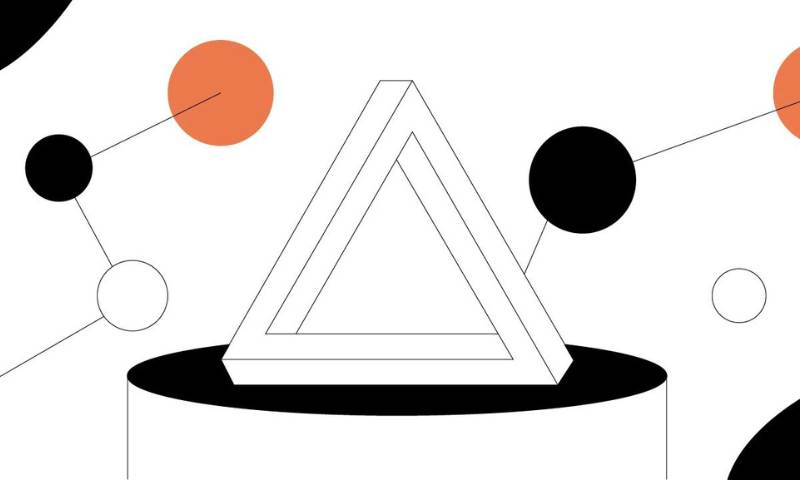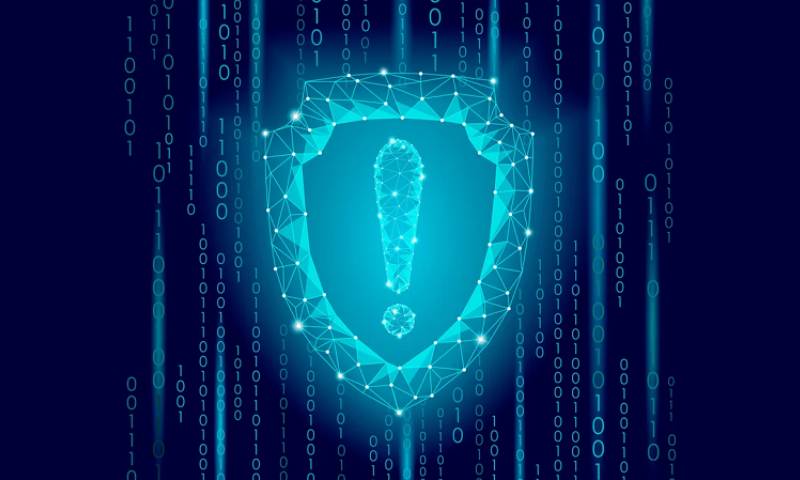Security Implications of Blockchain Sharding: Navigating Risks and Rewards
Imagine a world where blockchain isn’t just fast but also bulletproof safe. Sharding could make this real, but not without risks. As an enthusiast in this tech space, I’ve seen how sharding splits a blockchain into chunks or “shards” to speed things up. Yet, I’m here to tell you, these tiny shards come with their own big bag of security woes. With each shard acting like a mini blockchain, attackers have more targets to hit. We need to talk about security implications of blockchain sharding. I’m diving deep, from shard attacks to the nuts and bolts that keep them tight. Hold tight; we’re on a quest to balance speed with fortress-like security. Join me, and let’s crack this code together.
Understanding the Landscape of Sharded Blockchain Security
Identifying Common Vulnerabilities and Attack Vectors
When we talk about blockchain sharding, we think of a way to make blockchains run quicker. But as they become faster, some worries arise, particularly concerning security. Let’s dive into some of the troubles that can show up in blockchain sharding. One such issue is data breach risks. These happen when bad actors find a way to get private data from one of the shards. Another big worry is single-shard takeover concerns. This is when an attacker takes control of one shard, which can cause much trouble for the whole system. We also have to think about Sybil attacks, where someone makes many fake identities to gain a big influence within a shard.
With sharding, we break the chain into smaller bits or “shards”. Think of it as a big company that splits into smaller teams to work faster. Yet, if one team has a problem, it can affect the whole company. In blockchain, an issue in one shard might put the rest at risk. Shard security protocols help protect against these risks. They are the rules and tools we use to keep each piece of the blockchain strong against attacks. By watching over cross-shard communication and making sure nodes work as they should, we can spot bad actors early and keep them out.
So, what happens if a shard fails or has a problem? Shard failure impact on blockchain security means if one shard goes down, it can mess up the data or stop the blockchain from working right. This is like if one piece of a puzzle gets lost; the picture isn’t complete. Security risks in sharding mechanisms make it so we must always check how the parts talk to each other and protect each shard.
Exploring the Consensus Algorithms Impact on Shard Safety
Now, let’s peek at consensus algorithms. They are like the rules of a game where each player agrees on the score. In blockchain, they make sure everyone agrees on what’s true and what’s not. So, how do they keep shards safe? Consensus algorithms and sharding safety go hand in hand. They help nodes agree on the state of the shard. This is crucial for stopping false info from spreading across the blockchain.
One popular type of consensus is proof of stake. In simple terms, the more you invest in the blockchain, the more your voice counts. Proof of stake and shard security work well together because those who have more at stake want to keep things running smoothly. It helps avoid situations where someone might try to break the rules.
But there’s more to consider, like how we put shard data back together with rejoining shard data integrity issues. This means keeping the data safe and making sure it’s correct when shards merge back into the full blockchain. We also have to use smart ways to keep each shard safe without slowing things down. This is the careful dance of scalability versus security in blockchain. We want to be fast but not at the cost of being open to attacks.
Every shard also needs a good system to check transactions, which is validating shard transactions safely. Each transaction must be checked to be sure it’s honest and follows the rules. This is like a teacher checking homework to make sure all the answers are right.
In the end, the thing that ties all this together is creating secure sharding practices for blockchain developers. They’re the ones building the system. Teaching them the best ways to keep shards safe is key. They come up with methods to protect the blockchain, like sharding technology encryption techniques, where they use complex math to lock away data so only the right people can see it.
To make blockchain sharding work well, it’s all about balance. We must watch for weaknesses, keep rules tight, and teach everyone how to keep the system secure. This way, we can enjoy the faster speeds of sharded blockchains without losing sleep over security troubles.
Delving Into the Risks Specific to Sharding Mechanisms
Examining Single-Shard Takeover and Cross-Shard Communication Threats
Sharding splits a blockchain into pieces, or shards. This lets each shard handle its own transactions. This can make the whole network faster and able to scale. But, it also can bring new security risks. One big worry is the single-shard takeover. This is when an attacker takes over one shard. They could do this by gaining more control in the shard’s decision-making process. Then, they might reverse or change transactions. This is scary because it can hurt trust in the whole blockchain.
Security in sharding mechanisms is not just about protecting each shard. It’s also about the links between them. Cross-shard communication aims to keep the blockchain’s shards in sync. But, threats like wrong data flowing from shard to shard can happen. Attackers might try to mess with this flow. They could send false info or overload the system. This is hard to stop because these attacks can happen from one shard only. It messes with the whole blockchain, slowing it down or causing errors.
Balancing Scalability with Security in Sharded Systems
When we shard a blockchain, we want it to grow without fail. Yet, how do we keep our shards safe at the same time? It is like trying to watch a group of kids in a park. If you focus too much on one child, the others might get into trouble. In blockchains, if we focus too much on making it big, we might miss important security steps.
Nodes in a sharded network play a part too. They hold the blockchain’s data and follow the rules. But if nodes are not safe, the shards they look after could be at risk. This is why keeping nodes secure is key.
People want their transactions to be safe and quick. This is why we must keep shards safe and have them talk to each other right. The consensus algorithms help here. They make sure all nodes agree on the state of the blockchain. Safety in these algorithms means checking if the rules are tight. It’s about making sure votes in decision-making are fair and spread out.
Smart contracts are pieces of code that run actions on the blockchain. They must work right in sharded networks to keep trust up. We do this by making sure these contracts are checked well. This makes sure they do what they’re meant to and do not hurt the system.
A sharded system has to use good shard security protocols. It’s like a club that has rules to stop bad behavior. These rules help each shard stay safe and work with others. It helps stop bad things like data breaches.
Now, let’s talk about size versus safety in blockchain. Letting a blockchain grow means more chance for security issues. Think of it like a building – the taller it gets, the more we need to make sure it won’t fall. It’s finding the right mix, like a cake recipe, to have a blockchain that is big and strong.
Validator rotation is like taking turns guarding a fort. If we change guards often, attackers have a harder time getting in. This keeps each shard safer and makes the whole network strong.
Shard data integrity issues can come up when shards need to join up again. It’s like if you mix two paints and then try to split them back – it’s tricky. We must make sure that when shards come back together, the quality of the information is not lost.
Decentralization means not having one place in control. If done well, it can stop single points where attackers could hit. Yet, there are trade-offs. We want the network to spread out but also be secure. It’s like having a lot of doors in a house. Each door should have a good lock, so no matter where you enter, you feel safe.
Understanding blockchain’s moving parts helps us see where risks might come up. We can then make it less likely for bad things to happen. It’s all about keeping the blockchain safe, no matter how we grow it.
Crafting Robust Shard Security Protocols and Solutions
Enhancing Validator Security and Shard Data Integrity
When we split a blockchain into shards, we must secure each piece. Shards are like small blockchains. Some worry about shard security. Let’s dive into what keeps shards safe.
Validator security is key. Validators are like guards. They check if shard transactions are good or bad. For a shard to be safe, we need lots of honest validators. But bad actors can try to take over a shard. This is called a “single-shard takeover.” If they succeed, they control the shard. We stop this by shuffling validators often. This makes it hard for attackers to win.
Validator rotation helps too. Think of it as changing guards often. It keeps attackers guessing. The more we change, the safer we are. It’s like a game of musical chairs. But for security.
Next, we move to data integrity. Data must stay correct and safe. We use special math called cryptography. It secures data in shards when they talk to each other.
One more thing: shards must join back together right. This is key for a blockchain to work well as a whole. If done wrong, we could lose data. That’s bad for everyone.
Remember, we must keep validating shard transactions. This means checking they follow the rules. Safety is in the details. Secure shards mean a secure blockchain.
The Role of Cryptography in Securing Sharded Blockchains
Cryptography is like secret codes for shard safety. It keeps shard data hidden from bad guys. Blockchains use it to protect information. In sharding, it’s even more important.
Sharding splits the blockchain into parts. But these parts must talk safely. Cryptography protects this talk. It’s not easy. Attackers always look for weak spots. But top-notch codes keep us a step ahead.
Cryptography also helps with keeping an even load. This means spreading work fairly among shards. Why? If one shard has too much to do, it might slow down or fail. If a shard fails, it could hurt the whole blockchain. By spreading things out, we stay stable.
But we can’t forget about smart contracts. They are programs on the blockchain. In sharding, they must run safely across shards. Cryptography ensures they only share what’s needed. Keeping these contracts safe is key for trust in blockchain.
Encryption is a powerful tool in cryptography. It locks data away. Only those with the key can unlock it. Encrypting shard data keeps it out of the wrong hands.
Remember, no matter how good our cryptography is, we can always get better. We keep improving our codes. As blockchains grow, our security must too. Every shard matters. Every shard adds up to a safe, working whole.
So, there we have it. Sharding can be safe with the right tools. It’s all about teamwork. Validators, cryptography, and smart practices make for a strong defense. It’s like building a fortress, one block at a time. For blockchain builders, it’s a task worth tackling. For all of us, it’s a safer future in digital spaces.
Auditing and Setting Standards for Secure Sharded Blockchain Systems
Methods for Evaluating and Improving Shard Robustness
Checking if your blockchain shards are tough enough is key. You start by testing them. You set up fake attacks to see if they can stand up to trouble. This shows where they are weak and need more muscle.
How do we fix these weak spots? One way is to update the rules on how shards work together. We make sure they are all on the same page with security. It’s like making sure all the doors in a house lock right. Another way is to check the math that keeps shards safe, called consensus algorithms. If the math is strong, the shards are strong.
To do this well, we also look at how each shard talks to others. Shards must pass info safely. Any crack in their talk can let in bad guys. It’s like passing a secret note without letting others see it. We work hard to close these cracks.
Keep in mind that as shards grow, risks can too. That’s why we always keep an eye on how big they get and balance it with safety. Think of it like a balloon. If you blow it up too much, it might pop. But if it’s just full enough, it floats well and is safe. We want our blockchain to be the safe balloon.
Developing and Implementing Security Standards for Blockchain Shards
Now, how do we keep all these shards playing nice? We make rules they all follow. First, we pick out the best ways to keep shards safe. Then, we write them down into a guide. This is like making a playbook for a football team so they all know the moves.
Next, we teach these rules to everyone building blockchain shards. This means developers have a solid plan to follow. It’s like teaching everyone to wash hands to keep germs away. When we all follow the safety steps, everyone stays safe.
Finally, we keep making these rules better. We learn from what goes wrong and make changes. It’s kind of like having a recipe that you make better every time you cook. You taste it, see what could be better, and try again. This way, we keep pushing for shard safety.
In each step, we ask: “Does it make the shards safer?” We also look at how each fix will help the whole blockchain. It’s all about finding balance. You don’t want the safety measures to slow down the fun. But you also don’t want the fun to lead to a fall. Think of it as walking on a beam. You want to keep steady so you don’t fall off.
Staying on top of this is a big job. But hey, we want to have fun with blockchain without any worries. So, we keep tinkering to make sure these tiny pieces, the shards, can handle whatever comes their way. This makes our blockchain not just smart, but also tough. Just like us.
In this post, we took a careful look at sharded blockchain security. We learned about vulnerabilities that attackers might exploit and how consensus algorithms affect shard safety. We dug deep into the risks that come with sharding, like the danger of single-shard attacks and problems with shards talking to each other.
We also explored how to make shards strong and safe. Validator security and the use of crypto are key to keeping shard data safe. Finally, we talked about how to check shard strength and the importance of using security standards for blockchain shards.
I hope these insights help you understand the need for solid security in sharded blockchains. It’s a tricky balance between speed and safety, but with smart design, we can achieve both. Stay safe out there in the ever-growing world of blockchain tech!
Q&A :
What are the potential vulnerabilities introduced by blockchain sharding?
Blockchain sharding can potentially introduce vulnerabilities such as single shard attacks, where an attacker gains control of a single shard’s data or processing power. The reduced redundancy and potential for uneven distribution of nodes could also lead to weaknesses that an attacker could exploit, making it essential that sharding implementations include robust security protocols.
How does sharding affect the overall security of a blockchain network?
Sharding can affect the overall security of a blockchain network by distributing the data across multiple smaller partitions or shards, each potentially having a smaller number of nodes to validate transactions. While this can lead to improved scalability and efficiency, it may also reduce the security compared to a traditional blockchain where each node validates every transaction, if not implemented with sufficient security measures.
Can sharding make a blockchain more susceptible to certain types of attacks?
Yes, sharding can make a blockchain more susceptible to specific types of attacks, such as shard takeover attacks, where an attacker only needs to gain control over the nodes within a particular shard to manipulate or falsify transactions. Also, cross-shard communication complexities could introduce vulnerabilities that are less prevalent in non-sharded blockchains.
What measures can be taken to secure a sharded blockchain?
To secure a sharded blockchain, developers can implement several measures including strong cryptographic algorithms, randomly assigning nodes to shards to prevent targeted attacks, ensuring a sufficient number of nodes in each shard to maintain decentralization and security, and employing cross-shard communication protocols that ensure data consistency and integrity.
Does sharding compromise or improve the immutability feature of blockchain?
Sharding in itself does not inherently compromise the immutability of a blockchain, as the security and immutability of the data within shards can be maintained through robust consensus algorithms and cryptographic techniques. However, the architecture must be carefully designed to prevent vulnerabilities that could threaten immutability. If well-executed, sharding can increase scalability without compromising the core features of blockchain technology.


